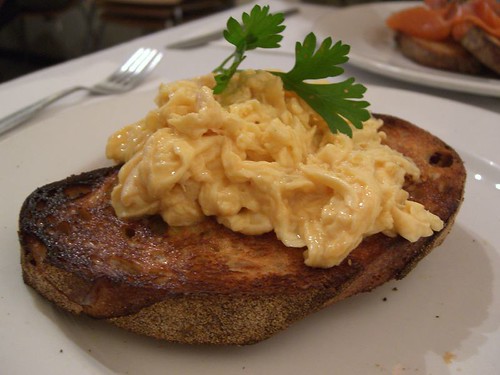Weight loss without the the ‘d’ word (diet!)
(From an article featured on my monthly newsletter – click here to sign up for regular updates)
Our relationship with food is one of the most significant we will have in our lives and what we eat every day can have a huge impact on our weight, health and mood. We all eat and choose different foods for different reasons. For some its routine, some comfort eat in times of stress or don’t eat at all while others crave sugar, salt or carbohydrate. Some don’t eat enough and others too much. Let’s look at two key areas of our relationship with food: why we are more attracted to certain foods, and how portion control has changed the way we eat.
Why do we crave certain foods?
Your feelings are generated by tiny brain chemicals called neurotransmitters; these include dopamine, serotonin and adrenaline. These neurotransmitters are responsible for dictating your mood and are greatly affected by what you eat. Serotonin is associated with a reduction in stress, tension and feelings of happiness, whereas dopamine and adrenaline have different mood effects by boosting concentration and alertness. In times of stress many of us crave chips, cheese or chocolate. As some foods directly stimulate a neurotransmitter response, e.g. carbohydrates influence serotonin production and caffeine stimulates adrenaline synthesis, we can begin to understand why the idea of a portion of cheesy chips is so tempting! Two other neurotransmitters are: GABA, which restores calm after a stressful event, and dopamine, which enables your body to deal with stress more efficiently, helping to reduce feelings of anxiety – these are also extremely helpful and can be found in food.
GABA is found in cheddar cheese, cows milk, chicken, turkey, eggs, flour and potatoes.
Dopamine is found in soya products like tofu, miso and soya yoghurt, peanuts almonds and tuna.
Serotonin is important to maintain feelings of happiness and positivity. It’s formed from the amino acid tryptophan, which is an essential amino acid – this means it can’t be made in the body and has to be sourced from food. This is where carbohydrate comes into play – it is used to make serotonin. One of the symptoms of a low carbohydrate diet is irritability and anxiety. To raise your serotonin levels naturally you will need to increase foods rich in tryptophan, e.g. cashew nuts, bananas, figs, cheese, milk and turkey. Avocados, lentils and bananas all contain levels of vitamin B6 which help with the conversion of tryptophan into serotonin.
What about chocolate?
Most palatable foods stimulate an endorphin release in the brain, however there is something rather special going on with chocolate. Chocolate is full of mood-enhancing chemicals. To start with, it is loaded with sugar, which is a carbohydrate and triggers the release of serotonin. Chocolate also contains fat, which in itself provides a feeling of satisfaction since it answers the urge for calories. Chocolate is also said to have the same mood-enhancing chemical that is found in marijuana, although in much smaller quantities. Chocolate also contains caffeine and sugar, which both give you a little energy high after eating and make you feel good. However, neither are actually addictive in the true sense of the word. It does contain ‘anandamide’, a cannabinoid, which hooks up to the same brain receptors that catch similar ingredients in marijuana smoke. So can you be a chocoholic? You usually crave chocolate when you are low in mood or blood sugar, and women crave it premenstrually. You are probably attracted to how it makes you feel. If you have a sugar ‘addiction’, at least change the quality of your chocolate to an organic, dark form if possible and let it melt on the tongue slowly.
Portion control
As waist lines expand, portion control has gone out of the window and I doubt many people know what a normal portion size is any more. Everything seems to be larger and super sized. A good example of this is chocolate bars and crisps. Did you know that a normal bag of crisps in the 1980s weighed 25g, it’s now 50g. Does that mean that you will eat half the 50g bag – of course you won’t! The 50g bag then becomes the norm and our point of view becomes distorted. Scones used to weigh about 50g and had about 160 calories – in a high street coffee shop they can now weigh as much as 190g and can contain 600 calories! All without us noticing. It only takes a few hundred extra calories eaten here and there over a typical day to gradually build up and trigger a gain in weight.
Hidden calories
As I go through my client’s food diaries, it’s amazing how much hidden fat and sugar they are eating without knowing it, and when it’s written down over a week they are amazed how much excess they are eating without knowing. If you are struggling with your weight, have a look at these main culprits and ask yourself – are they slipping into your diet without you noticing?
 Wine: A glass of wine can be 150-200 kcals per glass, depending on how large the glass is of course. Going out with your friends for a few drinks every night and having three glasses of wine would total 600 extra calories a night, an eye watering 4,200 extra kcals per week!
Wine: A glass of wine can be 150-200 kcals per glass, depending on how large the glass is of course. Going out with your friends for a few drinks every night and having three glasses of wine would total 600 extra calories a night, an eye watering 4,200 extra kcals per week!
Sandwich fillings: If you didn’t see the Dispatches programme recently about what goes into bought sandwiches, it was an eye opener. Bought sandwiches are often very high in fat or salt and making your own is the best option. Try and keep the ratio of protein, i.e. the filling greater than the bread. Also the addition of mayonnaise can add hundreds of calories to a sandwich. A bought tuna mayo sandwich could contain as much as 500 calories. A homemade turkey and avocado sandwich on wholemeal bread may contain as little as 300 calories.
 Lattes: Women who pick up a coffee on their way to work could be consuming almost a third of their recommended daily calories in one go. Increasingly sophisticated coffees and larger cups mean chains are regularly selling drinks that contain well over 600 calories each. A well-known high street coffee chain sells a large white chocolate mocha with “whip” made with whole milk – it has 628 calories – nearly a third of the recommended daily amount for women. So if you are addicted to your daily mocha chocca latte, take note. “I only have one a day,” I hear you say defensively – well, on a weekly basis that could add up to a staggering 3,500 kcals – that’s well over one day’s calorie intake for women.
Lattes: Women who pick up a coffee on their way to work could be consuming almost a third of their recommended daily calories in one go. Increasingly sophisticated coffees and larger cups mean chains are regularly selling drinks that contain well over 600 calories each. A well-known high street coffee chain sells a large white chocolate mocha with “whip” made with whole milk – it has 628 calories – nearly a third of the recommended daily amount for women. So if you are addicted to your daily mocha chocca latte, take note. “I only have one a day,” I hear you say defensively – well, on a weekly basis that could add up to a staggering 3,500 kcals – that’s well over one day’s calorie intake for women.
Dried fruit: If you are wanting to lose weight, I don’t consider dried fruit a healthy snack as it’s very high in sugar. Dried fruit should be soaked or eaten in minimal quantities. It is a high GI food, therefore not good for the blood sugar – normal fruit like apples, pears, peaches and berries are medium and low GI. Marketed as a healthy snack, you may eat much more of course, and a packet of dried apricots will have your blood sugar soaring.
Smoothies: There has been a lot of marketing hype recently about how smoothies are good for you and can be an easy way to have your Five a Day, but they can have as much as 11g of sugar per 100ml. Be sensible – if it tastes sweet, it is sweet. Having a daily smoothie is not good at all, sugar-wise you might as well be drinking a coca cola. If you really like your smoothies, limit them to two a week.
Flavoured crisps: Avoid crisps with flavours like sweet chilli as most companies will add sugar to any flavoured crisp; that may include salt and vinegar and black pepper as well. Stick to ingredients that say potato, sunflower and salt.
When trying to lose weight, bear in mind:
* No two people are the same as to what works
* The foods you crave are usually the ones to avoid
* Don’t go on a fad diet, i.e. starvation or shake diet – it’s not the way to go for long term weight loss
* Avoid low fat diets – these are not healthy – certain fat is good for you and actually helps you lose weight
In a recent survey, 9 out of 10 people said that if they were dieting they would cut out fat from their diet. The truth, however, is that low fat diets are not always healthy and do not necessarily help you lose weight. Although a diet high in saturated fat is not good either, we tend to put good and bad fat into the same mould. One calorie of saturated fat is not the same as one calorie of essential fat, which is needed by the brain, immune system, skin, hormones and heart. Crash dieting makes you hungry and the most important thing to remember when losing weight is to never go hungry. Starving yourself does not help you lose weight but causes your metabolism to go haywire and in the end can lead to the addictive patterns of yo yo dieting. As every person is individual a tailored weight loss programme is best – just because your friend has lost a stone on a fad diet, doesn’t mean that you will. You might have:
Different genes, hereditary illnesses, differing metabolic rates, nutritional deficiencies, food allergies, bad digestion, an under-active thyroid, specific medication needs, different motivational needs, work or family issues…
all of which will not help your weight loss. Remember we are all different and what works for one person will not necessarily work for someone else. People with an under-active thyroid will find it harder to lose weight so it’s important you know your thyroid is functioning before starting a weight loss programme.
An example of a day’s diet
Breakfast: Two scrambled eggs on wholemeal toast – rooibosh tea
Mid morning snack: Two apples and a handful of nuts – water
Lunch: Wholemeal pita stuffed with cold chicken, peppers, spring onion and lettuce. Fruit or a few square of organic chocolate
Mid afternoon snack: 2 oatcakes with hummus – water
Supper: Grilled/poached salmon, steamed vegetables and sauté potatoes.
Does this sound like a diet to you? No of course not – some of you are used to starving yourself, having a carbohydrate-based breakfast, a couple of coffees, and going long periods with not eating!
If you would like an individualised weight loss programme please call me. If you have been yo yo dieting all your life you will need to be de-brainwashed about the facts on losing weight and what is suitable for you. The key is to never think you are dieting. I’ve never put anyone on a diet and usually with a low to medium GI diet people lose about 4-6lbs per month eating five times a day.
Tips for losing weight
* Eat every three hours
* Eat protein and carbohydrate together
* Eat low to medium GI food
If you follow the above, you will automatically cut out high sugar foods
* Cut out all caffeine, and refined foods
* Drink approx 1.5 to 2 litres of water per day
* If you have an under-active thyroid you will need more exercise to boost your metabolism
* Have protein for breakfast rather than carbohydrate.
If you can remember one thing when losing weight it’s this:
IT’S NOT HOW MUCH YOU EAT, IT’S WHAT YOU EAT.
Why is the thyroid gland important?
The thyroid gland lies in front of the neck between the skin and the voice box. The entire gland weighs less than an ounce. Despite its small size, it’s an extremely important organ which controls our metabolism and is responsible for the normal working of every cell in the body. It achieves this by making the hormones thyroxine (t4), and triiodothyronine (T3) and secreting them into the bloodstream. In healthy people the amounts of T3 and T4 in the blood are maintained within narrow limits by TSH which is secreted by the anterior pituitary gland. If your GP suspects that you may have an under-active thyroid they will send you for a blood test. High levels of TSH means you have an under active thyroid. You will then need to go on thyroxine. The typical (but not necessarily accurate) type of person to get this is female, fat and over forty.
However, that is too specific. I’ve seen many underweight people who have under-active thyroids in their late 20s and 30s. If you are having trouble losing weight, feel the cold a lot and feel tired, it’s worth getting your GP to get a test. I have listed most of the other symptoms below. Unfortunately the thyroid blood test is notoriously unreliable as the thyroid secretions change quite a bit, so you might need several tests to get a positive result. If your blood tests come out positive your GP will usually leave it a month or two and do another one just to make sure. You are measuring your TSH level and often you can be borderline and then normal several months later. It is often hereditary, and particularly so in women.
What are the symptoms of an under-active thyroid?
* Cold hands and feet
* Tendency to feel the cold
* Fatigue, especially in the morning
* Depression
* Dry skin
* Headaches
* Constipation
* Loss of hair
* Aching in the joints
* Muscle cramps in the feet at night
* Swollen eyelids (especially in the morning)
* Swelling of hands and feel
* Heavy periods
* Loss of libido
Diet considerations for hypothyroidism
 Your diet should include apricots, dates, egg yolks, molasses, parsley, potatoes, prunes, raw seeds and whole grains. Eat fish and chicken.
Your diet should include apricots, dates, egg yolks, molasses, parsley, potatoes, prunes, raw seeds and whole grains. Eat fish and chicken.
Eat in moderation (they can suppress the thyroid function): broccoli, brussels sprouts, cabbage, kale, mustard, greens, peaches, pears, radishes, spinach and turnips.
Avoid white sugar and refined foods
If you are not doing so already, begin a moderate exercise regime to boost your metabolism.
Do not take sulphur drugs or antihistamines unless specifically directed by your GP.
Avoid fluoride and chlorine which both block iodine receptors in the thyroid gland, i.e. avoid fluoride toothpaste and highly chlorinated water.
An under-active thyroid may increase your risk of a heart attack, so take nutritional steps to make sure your heart is healthy.
Exercise can help the thyroid to work more effectively.
Eat zinc-rich foods such as almonds, tofu, chicken, turkey and pumpkin seeds.





